|
| Bottom | | Front page |
Environmental Essays no. 25, 2004
Roads to Healthier Traffic
Contents
Traffic affects health and the environment
The Danes and their traffic habits
Traffic is noisy
Roads to less traffic noise
Traffic and air pollution
Roads to less pollution
Traffic accidents
Roads to fewer accidents
Cars are comfortable
Roads to more exercise
Children are particularly vulnerable
If you wish to have more information
Traffic affects health and the environment
Modern societies cannot function without transport. Goods and products need to be carried to and from manufacturers and out to consumers. We also need to be transported when we
go to work, to school, or to leisure activities, and when we go to visit friends or family.
The way we choose to transport ourselves has an impact on health as well as on the environment. Some of the obvious problems are traffic accidents, pollution and noise – and children
are especially vulnerable.
Our choice of means of transport, however, also affects our quality of life in other ways. When, for instance, we take our car and not our bicycle, we deliberately disregard the health-
related benefits gained from the exercise of cycling. If we choose the car every time we need to be transported, the risk of overweight and circulatory diseases increases.
Luckily, developments are moving in the right direction. In Denmark, for the last three decades we have been working to reduce the negative influence of traffic on health and the
environment. During this period the number of traffic accidents has been reduced by 60 per cent, and many of the harmful contaminants in car exhaust gases have been reduced or totally
removed.
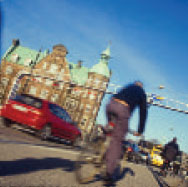
Photo: Scanpix
Still, a number of challenges lie ahead. For each of us as individuals, it is a question of making a healthier choice. For society as a whole, it is a matter of integrating health and the
environment in our everyday life and in the planning of urban areas and of transport.
This folder deals with transport patterns in Denmark – what do they mean to health and the environment? The folder presents the newest knowledge on this issue, and gives proposals
for ways to provide the framework for more healthy transport habits.
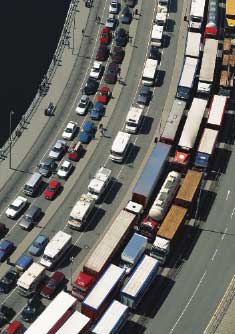
Photo: Scanpix
The Danes and their transport habits
Today, more than half of the Danish households own a car. Ten per cent have two or more cars. A total of
1.9 million cars are registered as private cars in Denmark – corresponding to 367 private cars per 1,000 inhabitants. Since 1992 the number of private cars has increased by 18 per
cent. By way of comparison, there are almost 4.2 million bicycles in Denmark, and, thus, statistically almost everybody in Denmark owns a bicycle. On an average, every Danish adult
goes approx. 400 km a year by bike – and mostly for short trips.
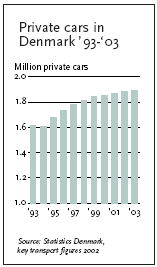
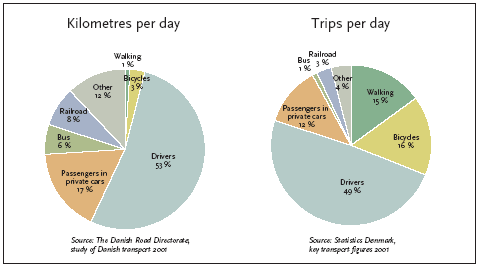
moving around more quickly
Every Dane above the age of ten travels almost 15,000 km per year. About half of this distance is by car, six percent by bus, eight per cent by train, three per cent by bike or moped, and one percent on foot (see figure on page 6). We are moving around more and more. The number of kilometres
we travel has risen by more than 50 per cent since 1980. However, the time we spend travelling has remained almost unchanged – we move around more quickly.
About half of all trips are by car, for 15 per cent we take the bicycle, and we walk 15 per cent. People who have a car travel much more than people who do not have a car.
The average transport distance per Dane is approx. 36 km per day. People with a car travel 37 km per day, and people without a car travel only 21 km per day. In households that own
two or more cars the average distance is approx. 50 km each day.
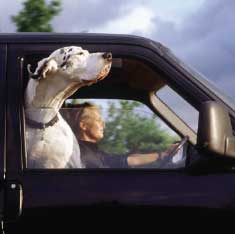
Photo: BAM
Traffic is noisy
Many Danes feel annoyed by noise from cars, trains and aeroplanes. Noise from road transport is the most important source of noise problems in Denmark. According to the Danish
government's strategy for reduction of road noise, about 700,000 Danish dwellings are exposed to some extent to noise from road traffic. Of these, about 150,000 dwellings are
exposed to severe noise, i.e. more than 65 dB. Studies show that noise levels of 50 dB and more may be very annoying to the people exposed. Traffic noise in a busy street reaches an
average of 65 dB. The figure on page 9 shows typical noise levels from a number of sources.
The Danish EPA has laid down guidelines for road traffic noise in different areas, for instance in residential areas, near schools, leisure areas and industrial areas. For new buildings the
guiding noise limit is 55 dB.
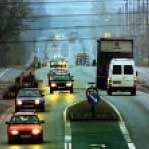
Photo: Scanpix
Traffic noise may be harmful to health
Research results indicate that noise may have a negative impact on human health. According to the World Health Organisation WHO, noise may
affect sleep, and this again affects health and wellbeing. Noise may increase the risk of cardio-vascular diseases. For persons exposed to continuous noise, measurements have been
made that show increased blood pressure and pulse, increased production of stress hormones and greater risk of a number of heart diseases.
Noise is perceived differently by different persons. However, many people feel that noise from traffic is annoying, and may therefore be stressed. When we are exposed to noise for long
periods, we may respond with anxiety, depression or become tense and aggressive.
Groups that are particularly noise- sensitive are children, blind persons, persons with impaired hearing, elderly persons, and all people who are ill or stressed. Studies also indicate that
permanent traffic noise may impair the ability of children to learn, mainly in primary school.
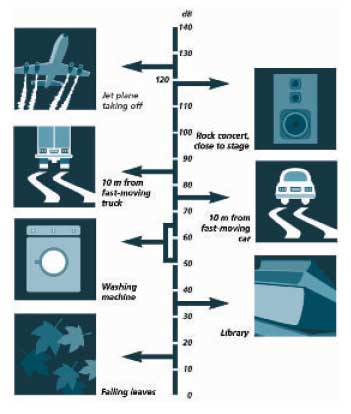
Source: Road Directorate
Roads to less traffic noise
Traffic planning is an important tool in efforts to reduce noise from traffic. Speed limits for roads may reduce the level of noise in cities. Noise in urban areas can also be reduced by
by-passes and traffic calming measures, in order to keep traffic out of residential areas.
New EU Noise Directive
In accordance with the new EU Directive on environmental noise (the Noise Directive), surveys must be made of noise from roads, railways, airports and in large cities in Denmark.
Strategic noise maps and action plans must be drawn up, and the public must be involved in this work. Mapping will be made for the first time in 2007-2008, and afterwards every five
years. The Directive will be transposed into Danish law in 2004.
The Directive aims at mapping noise in all Member States, on the basis of common measurement methods. A survey will be made of noise problems in Member States. Today there are
no uniform methods to determine the extent of noise problems in individual EU Member States.
More information on the Noise Directive is available on the Danish EPA website: http://www.mst.dk/transportuk/02040000.htm
New asphalt reduces noise
Danish and international experience shows that special road surfaces may reduce traffic noise. Several types are available. High-drain asphalt reduces noise
efficiently, but maintenance of this type of paving is rather expensive. The new noise-reducing thin-layer pavement does not reduce noise quite as much, but, on the other hand, it is
expected to be only slightly more expensive than conventional paving, and is equally durable.
Many of the dwellings exposed to noise are located along streets in urban areas. In a study in 1999, testing different road surfaces, three types of drain asphalt was tested in the
Copenhagen street Øster Søgade, where the speed limit is 50 km/h, and the average number of cars per day is approx. 7,000, of which almost 10 per cent are busses or trucks. The new paving reduced noise by 4-6 dB when it was new, and by 4 dB after one year, compared to conventional asphalt pavement.
Other tools
Other noise-reducing measures are:
- promotion of tyres that produce less noise
- speed limits in selected urban areas
- establishment of more noise walls
- traffic calming in urban areas, for instance by concentrating traffic in fewer streets
- bans or restrictions on heavy-duty vehicles in specific protected urban zones
- noise insulation of building facades
Strategy to reduce road noise
In the autumn of 2003 the Road Noise Committee set up by the Government submitted a noise strategy, presenting a range of possible measures to reduce the number of noise-affected
dwellings. The road noise strategy gives an overview of the health-related impacts of road noise, and, further, a socio-economic assessment of various road-noise reducing instruments.
The Government proposes that, over a number of years, approx. euro 13 million be reserved for noise-reducing measures along existing highways, for instance noise walls. Read more
about the road noise strategy on the Danish EPA website (in Danish: www.mst.dk, in English: http://www.mst.dk/transportuk/02020100.htm )
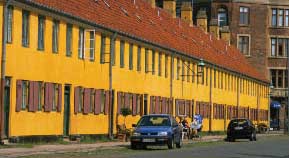
Photo: Scanpix
Traffic and air pollution
We are all affected by air pollution. In urban areas motor vehicles are major sources of air pollution. Also in the indoor air we are affected by contaminated air that invades houses.
Harmful substances
It is good to see that pollution of outdoor air has fallen markedly in recent years. For instance the content of lead in the air in Denmark has been significantly reduced. However, exhaust
gases from cars still contain a number of harmful substances. The most important are:
- Particulate matter (PM), including particles and dust. The particles are divided into different sizes, and the ultrafine particles are most harmful, because they may penetrate deeply into
the lungs and release toxic substances directly into the blood. The particles aggravate respiratory diseases and affect persons suffering from cardio-vascular diseases.
- Nitrogen dioxides (NO2) irritate the mucous membranes in the respiratory tract and lungs. About 40 per cent of the total nitrogen dioxide pollution in Denmark originates from traffic.
- Ozone is generated when nitrogen oxides react with volatile organic compounds, under the influence of solar radiation. Ozone is generated mostly in Central Europe, and carried to Denmark with the wind. Ozone irritates the mucous membranes and may cause pain in the eyes, the throat
and the air passages, and cause difficulty in breathing during physical strain.
- Carcinogenic polyaromatic hydro- carbons (PAH).
Petrol and diesel – pros and cons
Emissions of particles and nitrogen oxides (NOx) from diesel vehicles are bigger than from petrol-powered cars. These substances are harmful to humans, and the impact of diesel
vehicles on human health and the environment is therefore greater than that from petrol cars. However, they also release less CO2, because they go much farther per litre of fuel than
petrol-powered cars.
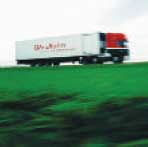
Photo: BAM
In addition, traffic accounts for about 20 per cent of the total CO2 emissions in Denmark, and this figure is increasing. Traffic, thus, contributes to the global greenhouse effect.
pollution is expensive The persons who suffer most from pollution are those who are most vulnerable: children, elderly persons, and persons suffering for instance from respiratory and
cardio-vascular diseases. Under the effect of air pollution, ill and elderly persons in particular may die at a lower age.
Particles – the biggest culprit
Particulate matter – especially fine and ultrafine particles – is considered to be the substance in exhaust gases from diesel-powered cars that is most harmful to health, and the particles
are most dangerous for people who suffer from cardio-vascular and respiratory diseases. From the new government report on particle pollution it appears that about 450 deaths could
be avoided each year if all diesel-powered vehicles in Denmark were fitted with particle filters. In 2004 and 2005 the Finance Act reserves a total of euro 4 million for a scheme to
support installation of particle filters.
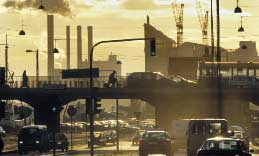
Photo: BAM
Roads to less pollution
New technical solutions have brought us a long way on the road to less pollution. In Denmark catalytic converters were made obligatory for new petrol- driven cars in 1990 – causing
emissions of carbon oxide, nitrogen oxides (NOx) and hydrocarbons to fall by up to 90 per cent. Also lead-free petrol and low-sulphur diesel fuels have contributed to reducing air
pollution.
In the future, new technologies such as hybrid cars and electric cars may totally eliminate direct air pollution from urban traffic. At the same time, there is a need to improve the existing
technology in order to reduce air pollution. A new technological solution that may play an important role in the future are particle filters in diesel- powered cars.
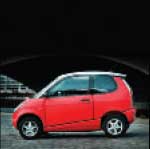
Photo: Scanpix
Smooth driving is best
The speed of the car and the driving pattern affect emissions of harmful substances. Urban traffic is least polluting when going at speeds of 40-50 km/h. Therefore,
green waves adjusting traffic lights so that the lights are green when you drive in the city at the prescribed speed, can be an effective tool
to reduce air pollution. When driving outside urban areas, an even speed of 80 km/h secures the least pollution and the best fuel-efficiency.
Avoid short trips
Starting a cold car engine is very fuel- demanding. The first kilometres of driving take 50 per cent more petrol than normal consumption. What is more, a cold-started engine pollutes the
air during the first minutes of driving just as much as 70 kilometres on a warm engine. Therefore, in everyday use of the car, the number of trips has a great impact on how much the car
pollutes the air. It is a good idea not to use the car for short trips.
Targeted planning
Air pollution can also be reduced by targeted urban and traffic planning.
Air pollution can be reduced by focusing on environmentally friendly means of transport – for instance car sharing, commuter plans, more consideration for bicycles and for public
transport, and parking restrictions. Environment zones where for instance only diesel cars fitted with particle filters are allowed, may contribute to reducing pollution.
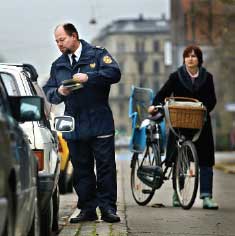
Photo: Scanpix
Traffic accidents
Every year a large number of Danes are injured or killed in traffic accidents. However, compared to 1994, the number of persons injured or killed in traffic accidents has fallen (see
table).
The figures in the table include only the accidents that have been reported to the police. From figures registered at Danish casualty wards we know that the real number of casualties may
be up to five times higher, mostly less serious accidents and solo accidents involving soft road users that are not reported to the police.
As regards road fatalities, Denmark is doing quite well compared to other European countries – however, we are not among the best. According to the OECD database of traffic
accidents, Denmark had 8.1 road fatalities per 100,000 inhabitants in 2001, almost the same as in Finland and Germany, with 8.4 and 8.5 respectively. Sweden with 6.2 and Norway
with 6.1 are doing better. But in France the figure is 13.8.

Photo: BAM
Different risks
The risk of being involved in a traffic accident depends on whether you go by bike, by car, or on foot. When we look at the total number of victims, people going by car represent the
highest number of accidents. Almost half of the people who were killed or injured were passengers in or drivers of a car. Pedestrians only represent about one fifth of the road fatalities
and one tenth of the injured, while the corresponding figures for cyclists are just over one tenth and almost one fifth respectively. It is also possible to calculate the risk of different types
of road users being killed or seriously injured in road accidents – seen in relation to the number of kilometres they travel. The calculations show that pedestrians and motor- cyclists are most at risk.
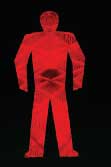
Photo: BAM
Age, speed and alcohol
Drivers below the age of 25 are exposed to special risks in traffic. Of every three road fatalities, one person is below the age of 25. The faster you drive, the
greater the risk of accidents, and the more serious the accidents are. Moreover, studies show a relationship between drink driving and traffic accidents.
Most accidents occur in urban areas, with an average of two thirds of all traffic accidents. About 30 per cent take place outside the cities, and only 4-5 per cent on motorways. The risk
of injury in cities is largest for cyclists and pedestrians.
| Number of persons killed and
injured in Denmark in 1994-2003 |
| |
1994 |
1995 |
1996 |
1997 |
1998 |
1999 |
2000 |
2001 |
2002 |
2003 |
| Killed |
546 |
582 |
514 |
489 |
499 |
514 |
498 |
431 |
463 |
432 |
| Injured |
9,757 |
9,991 |
9,810 |
9,617 |
9,175 |
9,393 |
9,092 |
8,465 |
8,791 |
8,412 |
| Total |
10,303 |
10,573 |
10,324 |
10,106 |
9,674 |
9,907 |
9,590 |
8,896 |
9,254 |
8,844 |
Source: Statistics Denmark, 2001 and information system of the road sector, Road Directorate
Roads to fewer accidents
The reason why the number of traffic accidents has fallen in recent years is a combination of a range of efforts. In the last three decades general speed limits have been introduced. Safety
belts and headlights are obligatory. In the same period, the blood alcohol concentration limit was lowered to
0.05 per cent.
Traffic calming – for instance roundabouts, bicycle tracks, and cycle lanes and crossing facilities for bicycles in intersections – has also been a key element in recent years' efforts. In
addition, good results have been achieved by police control of speed limits and information campaigns on the relationship between drunk driving and speed. Also campaigns on the use
of safety belts in cars and bicycle helmets have been successful.
Generally, actions at local level have become more targeted, and many of the Danish municipalities have set up traffic safety action plans, possibly combined with an environmental action
plan.
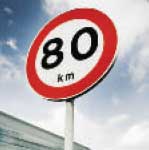
Photo: BAM
local traffic decisions reduce the number of accidents most
When citizens in a local area take part in decisions on traffic regulation, they assume responsibility. They reduce the
speed in the local area, and thus also reduce the number of accidents. These results were demonstrated in a traffic calming project that was carried out in a residential area (Mørkhøj in
the municipality of Gladsaxe) close to Copenhagen in 1996.
Danish targets
In its action plan ("One accident is one too many") the Road Safety Commission has set up targets for reduction of the number of persons killed or seriously injured in traffic accidents in
Denmark: numbers should be reduced by one third and by two thirds respectively by the end of 2012. Actions will focus on four key elements: speed, intersections, bicycling and drink
driving. See also the figure on page 17.
During the project 30 km/h and 40 km/h speed zones were established. The local residents decided which measures should be used to lower the speed, for instance chicanes and
bumps. Average speeds in the area dropped by 10 km/h, or 20 per cent. After the calming measures were established, 80 per cent fewer persons were injured in a four-year period,
compared to casualties in the four preceding years.
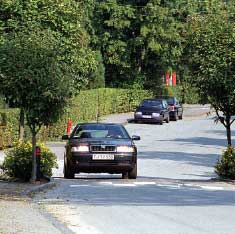
Photo: Scanpix
Cars are comfortable
In the last three decades the number of private cars has increased considerably. And the number of pedestrians and cyclists has fallen. Distances between home, job and shopping
centres have increased, and this is one of the reasons why more and more people go by car. In addition, many Danes prefer the car because it is comfortable and makes everyday life
easier when taking and fetching children and when shopping.
This development is furthered by the fact that in recent years the Danes have more money to spend on consumption, leaving more money to buy also a car and a house. Moreover,
family patterns have changed, and in more families both parents are employed outside the home.
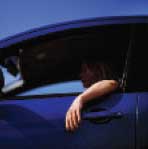
Photo: BAM
Green road users
Many Danes are very aware of health and the environment, for instance by saving energy and water, and by choosing organic products. When it comes to transport, the environmental
consciousness can be comprised in the words: green road users. The green road user will take the bike or walk for short trips, he will focus on energy when driving, he will buy an
environmentally sound car or use public transport whenever possible.
Physical exercise is good for health
When you go by bike instead of by car, it is good for your health. When you choose the comfortable means of transport, it affects your health
negatively. A problem throughout the industrialised countries is that many people do not get enough exercise in their daily life.
Lack of exercise affects health
Exercise strengthens the heart and circulation, and, thus, prevents heart and circulatory disorders such as hardening of the arteries, increased blood pressure and blood clots.
If you do not get enough exercise you run a greater risk of becoming over- weight and having some of the illnesses related to obesity, for instance diabetes. Exercise also affects your
bones and immune system. What is more, physical activity has a positive effect on your mental wellbeing – people who are physically active suffer less from stress, anxiety and
depression.
By the same token, persons who do not get enough exercise run the same risk of having blood clots in the heart as do smokers. A Danish study shows that regular physical activity
during leisure time increases life expectancy. All age groups benefit from regular exercise.
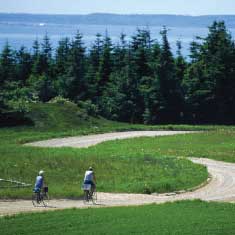
Photo: Scanpix
Roads to more physical exercise
It seems natural to integrate physical activity in everyday life. And to do so, the choice of means of transport plays a key role. When you choose to walk or take the bike, instead of
going by car, exercise comes naturally. The National Board of Health recommends 30 minutes of physical activity every day. Beside a number of direct positive consequences for you as
an individual, less car traffic will also benefit society as a whole, because fewer cars give less noise and less pollution.
There are numerous possibilities of integrating physical activity in your daily transport habits:
- go by bike or walk to work, to the supermarket, to the local store etc.
- walk to and from the bus, and get off one or two stops before your destination
- make a small detour when you cycle to and from work
- take the stairs at the railway or bus station, and everywhere else you go.
Places of work can also do something to reduce their employees' use of the car, for instance by making bicycles available, and by taking due consideration for health and the
environment when organising business trips.
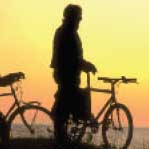
Photo: BAM
The city of odense – good for bicycling
In the city of Odense, which has been appointed national cycle city in Denmark, great efforts have been made in recent years to improve
conditions for bicycling. Among the measures taken are good parking spaces for bicycles, extended nets of lanes and routes for cyclists, improved safety for bicycles at crossroads etc.
Cycles are allowed in pedestrian streets, traffic lights ensure green traffic waves for cyclists, and the municipality lends out bicycle trailers to families who take children to and from
daycare centres. Moreover, the municipality of Odense is running campaigns and organising events to promote cycling. It is estimated that the local efforts to improve conditions for
bicycling have increased transport by bicycle by 10-15 per cent.
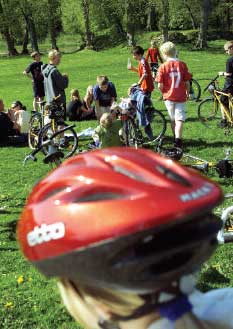
Photo: BAM
Children are particularly vulnerable
From studies we know that children are particularly vulnerable to the harmful effects of traffic. They may be more sensitive to noise – also traffic noise – than adults. If children are
exposed to traffic noise for prolonged periods, their reading ability, long-term memory and learning ability may be impaired. Children do not have the same possibility as adults to change
their physical surroundings. They depend on the good will of adults to secure good and healthy surroundings – also when it comes to noise.
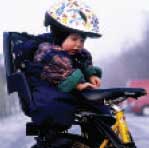
Photo: BAM
Noise-sensitive children
The WHO points out that continuous traffic noise may impair the learning ability of children, especially in primary school. According to an EU report prepared by
the National Institute of Public Health in Denmark, even low noise levels may impair or delay the cognitive development of children. Noise may have a negative effect on language
perception – and, thus, the linguistic development, motivation and concentration – of children, and noise may also cause stress and impair sleep.
freedom to move around Several studies show that the mental and social development of children is furthered when children grow up in areas where traffic is limited. In residential areas
with low-speed regimes there are signs that the quality of life and the scope for development and interplay increase for all residents. Speed limits increase the safety of pedestrians and
cyclists, they benefit families with children, and offer more scope for children to move about, especially for children between the age of seven and nine.
Other studies show that when children cannot move around without being watched by adults, their social and motor development is impaired. They do not have the same freedom to
move around, and therefore do not get familiar with the local neighbourhood.
Good habits are formed at an early age
Recent years have seen a radical change in the habits of families with young children, for instance when it comes to transport to and from school. Increasing numbers of children are
taken to school by car, instead of walking or bicycling themselves. They might therefore get used to the car as the most important means of transport. It is important to make the way to
school safe, so that parents feel confident when teaching their children to go to school alone. Children who are not physically active are exposed to the same health risks as adults who
do not take enough exercise. One in five young Danes is not physically active and does not move around very much in his daily life. Adults are models to children – also when it comes
to physical activity.
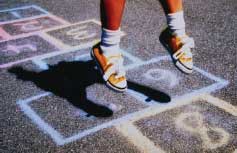
Photo: Scanpix
Healthy cycling habits
The Danish Cyclists Federation has for many years been running the "Bike to Work" campaign, focusing on work- places. In 2002 a similar campaign,
"Freewheeling", was launched for the first time, directed towards schools and encouraging children to go by bike to and from school. Each class participates as a team, and prizes are
awarded to the winners. In 2003 more than 70,000 children took part in the campaign, corresponding to one tenth of all Danish school children from a total of 600 schools. The aim of
the campaign is to teach Danish children healthy exercise habits and to teach them to be physically active.
If you wish to have more information
Read more
Environment and health are closely related – Danish EPA Working Report no. 3, 2003. Available online on the Danish EPA website: http://www.mst.dk/udgiv/
Publications/2003/87-7972-931-2/ html/default_eng.htm
Bistrup, Marie Louise (ed.): Health effects of noise on children and perception of the risk of noise. National Institute of Public Health, Denmark, 2001
information and guidance
- Ministry of the Environment information centre, Frontlinien, phone +45 70120211
- Danish EPA: www.mst.dk/ homepage
- National Environmental Research Institute: http://www.dmu.dk/ forside_en.asp
- National Board of Health: http://www.sst.dk/ default.aspx?lang=en
- Ministry of Transport: http://www.trm.dk/sw523.asp
- Danish Cyclists Federation: http://www.dcf.dk/index10.htm
- International Society of Doctors for the Environment: http://www.isde.org/
| Top | | Front page |
Version 1.0 June 2004, © Danish Environmental Protection Agency
|





















